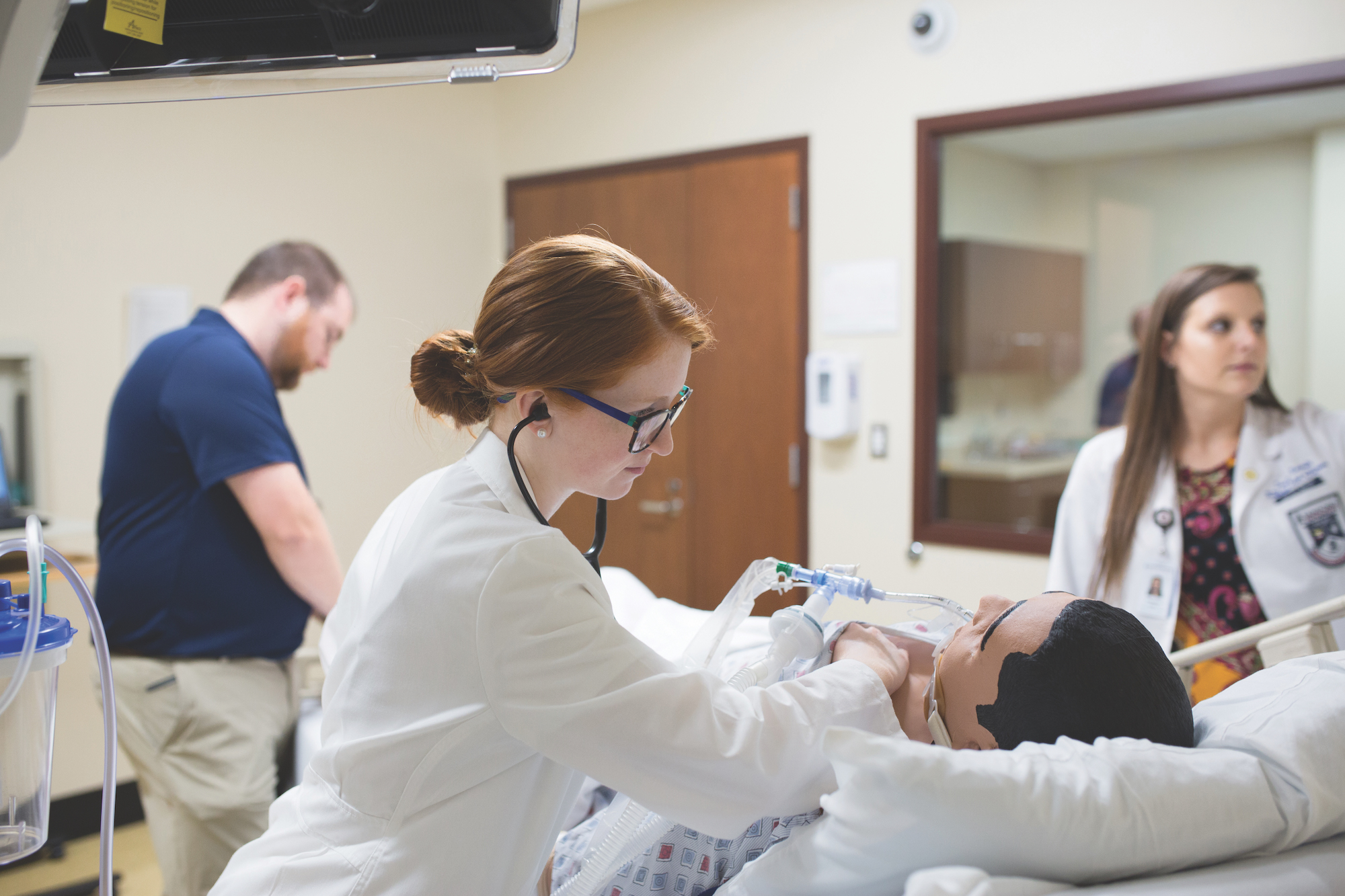In 2009, Ida Moffett School of Nursing first utilized high-fidelity simulation to provide students with realistic patient care scenarios within a safe environment. Over the past ten years, the authenticity of these scenarios has changed drastically.
As a nursing student, Jill Pence recalls using an orange to practice giving an injection and a red solo cup to practice inserting a Foley catheter. Today, she serves as the executive director of Samford’s Experiential Learning and Simulation Center, enhancing the depth of learning for students across the College of Health Sciences by overseeing an average of 4-6 experiential learning events daily.
“Simulation is a key component to nursing education as it ensures that students are prepared for a variety of health care scenarios before entering their clinical sites or caring for patients,” said Pence. Within Samford’s 22,000-square-foot Experiential Learning and Simulation Center, nursing students have access to nearly 100 task trainers, 20 low-, medium- and high-fidelity mannequins and 15 simulation spaces. “They gain confidence and familiarity as they perfect their skills and put them into context,” Pence said.
Following simulations, instructors review video footage and provide feedback to students; frequently, feedback is immediate. Faculty can even momentarily pause a simulation to make corrections or discuss how patient care could be enhanced. “We are improving the quality and safety of patient care by giving students the opportunity to practice in a controlled environment and providing detailed feedback,” said Pence.
Before simulation, students moved directly from classroom to clinical to practice. Now, students advance from the classroom and are set in a simulated, realistic setting where they are making decisions before they ever walk into a clinical setting where decisions could harm a patient.
“Simulation is the intersection of knowledge, skills and critical thinking,” said Lora Shelton, associate professor and undergraduate nursing chair. “Simulation allows our students to function in an environment that mirrors an actual clinical situation. It presents them with an opportunity to think on their feet, making quick, strategic decisions.”
When Samford nursing students enter their first clinical experience, it is not the first time they have assessed a patient, worked with a patient’s family or collaborated with a heath care team. In the Experiential Learning and Simulation Center, nursing students interact with hired citizens who play the role of a standardized patient. They also collaborate with programs across all four schools within the College of Health Sciences.
Pence refers to nurses as the anchor of patient care. “Our student nurses have a unique advantage because they are learning about, with and from 12 other health care disciplines,” Pence said. “They are being exposed to the resources other providers bring to the clinical arena early on and that ultimately enhances the quality of patient care.”
Pence says that the center will continue to seek opportunities to increase student learning and challenge students to think critically because although health care continues to change, the goal of effectively and compassionately managing patient care never will.
